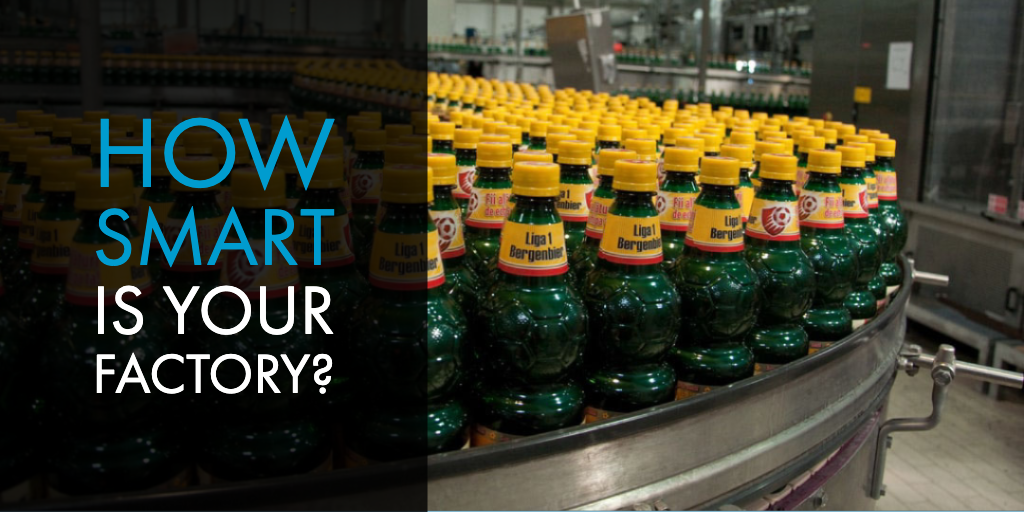According to Forbes, technology is the dominant trend in manufacturing for 2020. More and more manufacturers will look to technologies that make their factories smarter by utilizing:
- Internet of Things
- AI and Machine Learning
- Predictive Management
Why? Manufacturers will continue to feel the pressure to keep costs low, deliver products faster, and maintain product quality. If technology is not incorporated into the manufacturing process, manufacturers will simply not survive. People cannot do it alone. That’s why smart factories are becoming a vital part of the manufacturing industry's future.
The First Smart Factory
Schneider Electric, based in Lexington, Kentucky, announced in 2019 that it had launched the “first smart factory in the United States.” As a company, Schneider Electric has smart factories in other countries. Still, the Lexington installation is the first in the U.S. The unique challenge was how to turn a 60-year-old factory into a 21st-century smart factory.
It didn't happen overnight. It took time. The company had to balance the need to embrace the new connected technologies with business needs and budget constraints. Its successful conversion came from a step by step approach that put the most crucial technologies in place and then worked to connect the devices. As a result, the Lexington facility is an integrated enterprise that uses the IIoT to drive process optimization. AI and machine learning increased operational efficiencies, and predictive management enabled them to make data-driven decisions.
As a company, Schneider is committed to the digital transformation movement. Schneider believes that transformation can help businesses make informed, data-driven decisions, which can result in improved profitability, a more productive workforce, and operational efficiencies. To date, the company has eliminated 90% of its paperwork and reduced its mean repair time by 20%. To stay competitive, Schneider realized its operations had to become smarter. They had to be secure, agile, and sustainable.
Manufacturers with dated facilities only need to look at Schneider Electric to see what is possible. A 60-year-old-building is now a smart factory where decisions are data-driven, and operational efficiencies contribute to profitability. Even a small step towards a smart factory is one step towards a more viable business.
Industrial Internet of Things (IIoT)
A factory must have an IIoT before it can be smart. The IIoT focuses on communication and connectivity. It is concerned with the intersection of information technology and operational technology. Without an IIoT, all the devices, no matter how smart, cannot share their data. It is this sharing of data that makes it possible for companies to make informed decisions that improve operational efficiencies.
Research from MPI Group found that nearly 70% of manufacturers credit the IIoT with increasing their profitability. One example is the German manufacturer Siemens. The Siemens AG plant, which builds automated machines for car manufacturers, claims to be roughly 75% automated. Its 1,150 employees mainly operate computers and monitor the processes. According to the company, these changes have increased efficiency and reduced costs.
Implementing an IIoT requires careful consideration and planning. Most companies will follow Schneider's model, which balances the technology against business needs and budget constraints. For those companies that move forward with IIoT, they will realize improved uptime, reduce costs, and minimal waste. They will find themselves in a better position to realize the benefits of a smart factory.
AI and Machine Learning
Improving shop floor productivity has been the leading growth strategy for manufacturers in 2019. Manufacturers continue to invest in machine learning platforms that deliver the insights needed to improve product quality and production yields. According to a recent survey by Deloitte, machine learning is:
- Reducing unplanned machinery downtime 15 – 30%
- Increasing production throughput by 20%
- Reducing maintenance costs by 30%
- Delivering up to a 35% increase in quality
It has been forecast that 50% of companies that embrace AI over the next five to seven years have the potential to double their cash flow. With such a strong ROI, what manufacturer wouldn't move towards a smart factory?
Predictive Management
Today's manufacturers operate in a world full of risks and unknowns, but factory performance should not be one of them. Manufacturers shouldn't have to worry about uptime. Smart factories can provide information and technology that make predictive analytics work. A smart factory can use data from each device to predict possible equipment or system failure. The potential point of failure can be addressed before it impacts operations. In a manufacturing environment, an hour of downtime equates to at least a $100,000 loss. In today's market, what company can afford a $100,000 loss?
Deploying smart technology throughout an enterprise means the IIoT, with its AI and machine learning, collects data on the supply chain through to the end-user. Synthesizing that data means companies can use predictive analytics to anticipate changes in the market or to detect problems in the supply chain. Managing through the predictive capabilities of a smart factory allows companies to make faster and more informed decisions.
A Smart Future
Where is your business on the continuum from traditional to smart factories? Without the technologies that make up a smart factory, your company is walking away from:
- Increased profits that 79% of your competitors will realize
- A potential increase in cash flow of 50% in the next five to seven years
- Less downtime that costs you $100,000 per hour
As Schneider Electric demonstrated, converting to a smart factory can be completed over time. It can be accomplished no matter how old the existing factory. There's really no excuse not to get started.
The farther down the continuum your company moves the more it will realize the potential of a smart factory. It will understand how the connectivity of the IIoT optimizes operations. You will be able to operate more reliably with automated workflows and improved tracking and scheduling. You will be able to increase yield, uptime, and quality while reducing costs and waste.
Real-time data can be transformed into actionable insights that make for faster decision making. Predictive management analyzes data to decrease downtime or to identify problems throughout the enterprise before they impact the bottom line. With a smart factory, your company becomes an agile enterprise that can transform itself to meet the ever-changing needs of your end-users.
For help in creating an environment where collected data is turned into actionable knowledge, contact us. We can help bring you one step closer to a smart future.






Leave a comment